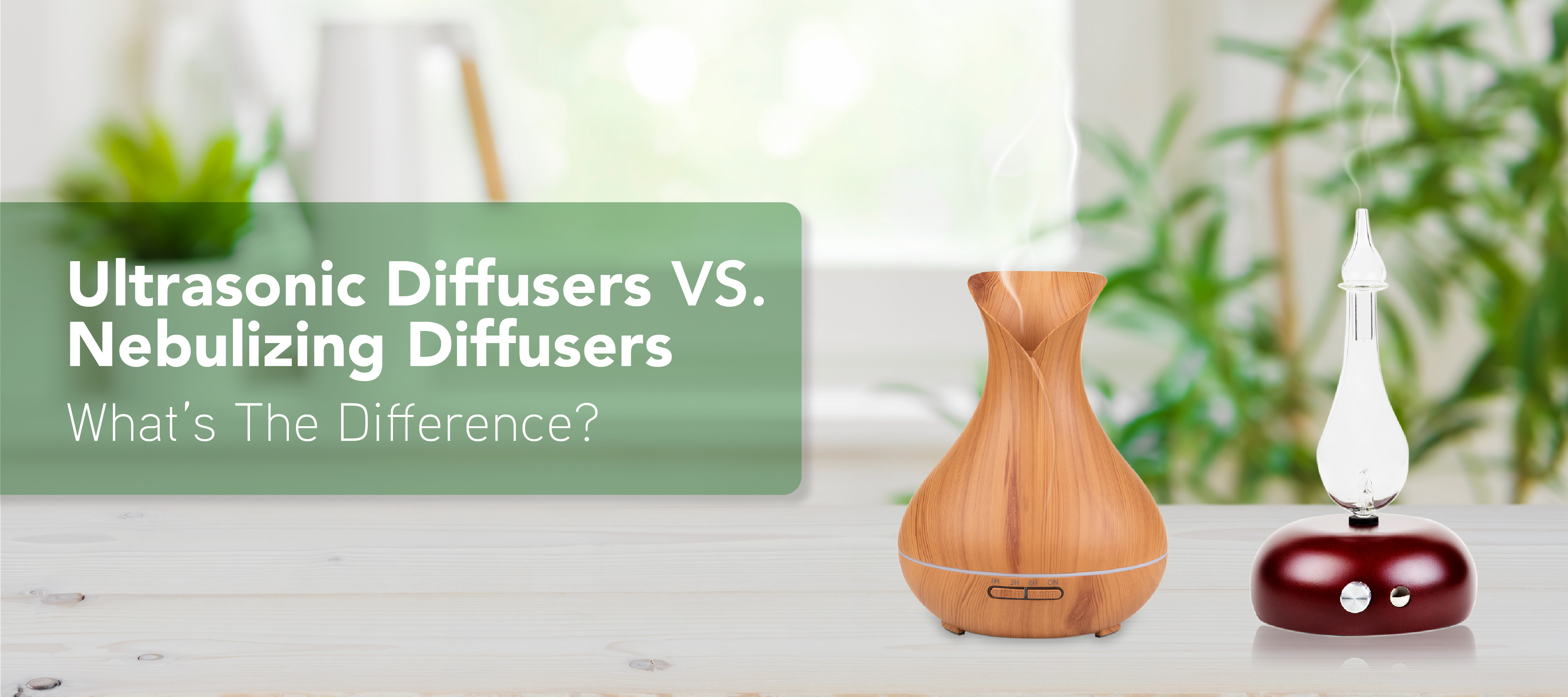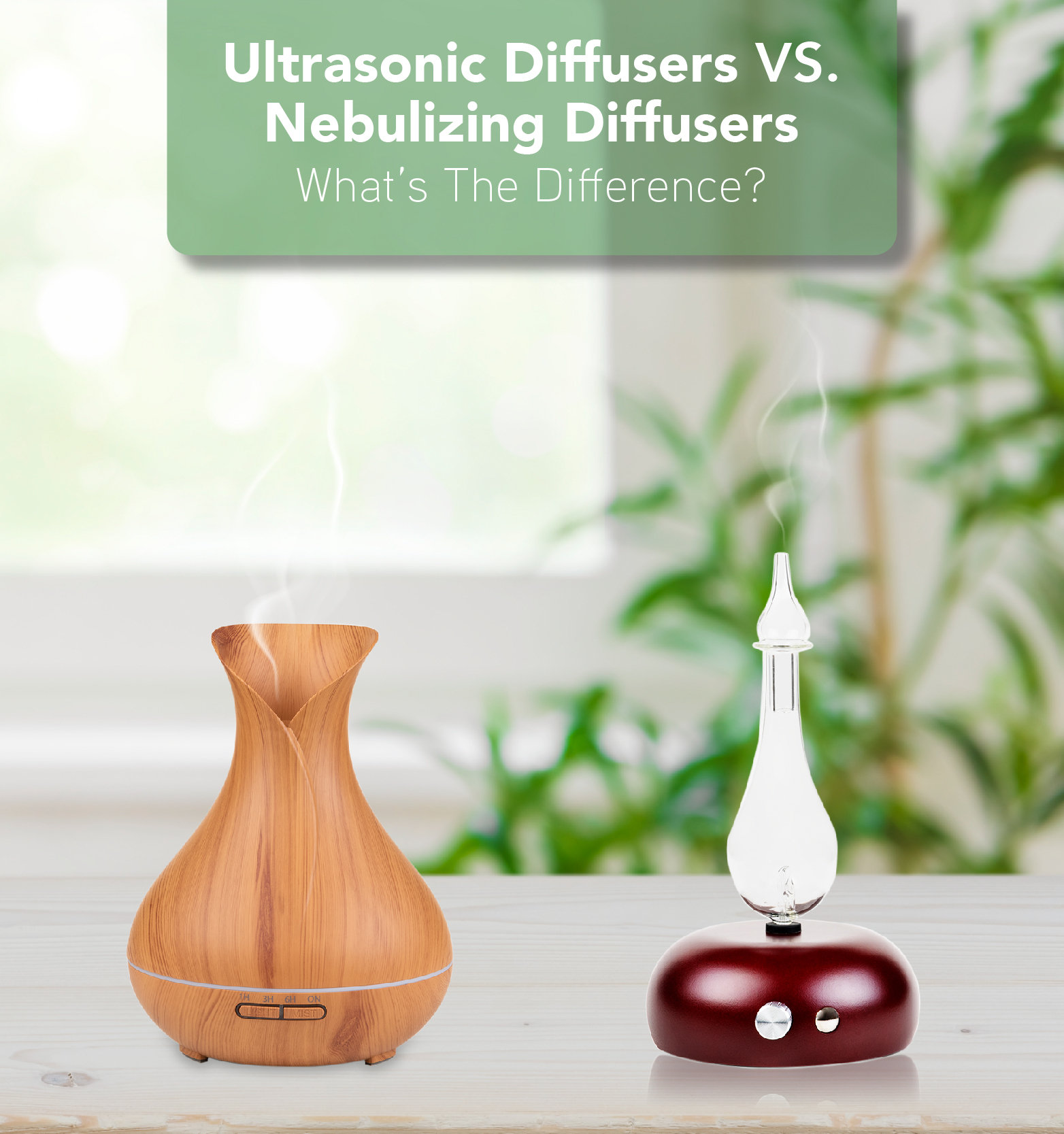

When you look for a device to diffuse your favourite essential oils throughout the room, you’ll find that there are various types of diffusers to choose from on the market. Among them, ultrasonic diffusers and nebulizing diffusers are believed to be the most therapeutic ones. What’s the difference between these two types of diffusers is one of the most commonly asked questions by aromatherapy lovers. Today, we’ll explore the differences between an ultrasonic diffuser and a nebulizing diffuser to help you decide which is best for you.
Let’s dig into the differences by explaining how ultrasonic diffusers and nebulizing diffusers work:
An ultrasonic diffuserhas a water tank for you to add water and essential oils. The small disc beneath the water causes ultrasonic vibrations to create a mist, diffusing the oils into the air. It’s different from steam, which involves heating up the water.
A nebulizer diffuser comes with a tube, which is the place to add essential oils. While ultrasonic diffusers rely on water to evaporate essential oils, nebulizing diffusers rely on an air-jet pump to blow the air across the top of the tube. This creates a vacuum to lift the fine particles on the surface of essential oils and disperse these tiny droplets into the air. The process requires no water and no heat, avoiding diluting the essential oil and maintaining the purity of essential oils.
Comparison between an ultrasonic diffuser and a nebulizing diffuser:
Naturaroma Glass Nebulizing Diffuser |
Naturaroma Ultrasonic Essential Oil Diffuser | |
|---|---|---|
| Principle of Operation | Uses the process of cold vaporization to blow the air and to disperse essential oils into the air | Uses evaporated water particles to transport the essential oils into the air |
| Material | Made of 100% natural material: real wood base and hand-blown glass | Made of plastic |
| Oil Usage | Blows through 10 drops of oil in less than an hour. | Uses very few essential oils, just a few drops a day |
| Therapeutics | Emits a more concentrated mist and does not damage the therapeutic benefits of essential oils | Lose the therapeutic benefits of essential oils because the air, water and light will breakdown the fragile essential oils |
| Scent | Keep pure essential oils and no water needed, eliminating the risk of moldy or distorted smell | Mold can accumulate inside the diffuser when the old water is not completely cleaned and dried, causing a moldy smell |
| Use of Strong Essential Oils | Can be used to diffuse strong oils such as citrus as it won’t corrode | Does not recommended for strong essential oils because its plastic based |
| Humidity | Does not release moisture into the air, will not add additional moisture in the room | Evaporates water particles, making your room more humid |
| Diffusion Time | Maximum length to run is 10 minutes, one to three times a day. | Maximum length of time to run is 30-60 minutes, one to three times per day |
| Cost | $119 | $49.99 |
If you are on a budget and looking for a device consuming less essential oils for everyday use, you’re hands down going to want to get an ultrasonic diffuser.
If you don’t mind the low hum noise and want to use a strong concentrated dose of essential oils for specific acute complaints (e.g. illness, recurrent headaches or respiratory issues), nebulizing diffusers are more ideal for you.
Ultimately, it’s really a matter of personal preference-which is exactly why we carry both ultrasonic diffusers and nebulizing diffusers at Lierre.ca, so that everyone can find their favourite devices, reap the benefits of essential oils and share it with their entire family.
Diffusers at Lierre.ca


